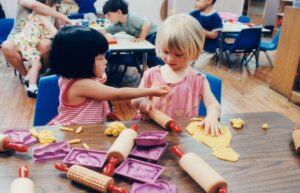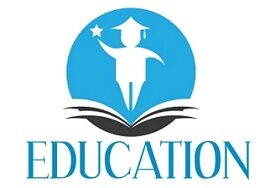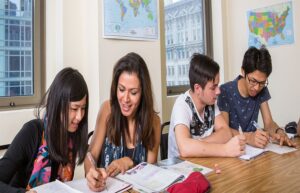
Effective Preschool Curriculum
High-quality care and education are associated with short- and long-term cognitive, social, and emotional benefits for early childhood development. Two criteria are used to measure quality: 1) process variables (for example, the nature of interactions between the child and adult caregivers; and 2) structural variables (such as characteristics that can be regulated by policies and which create conditions beneficial to the development of children, or the adult-child ratio, group size and teacher training). 1.2A teaching program (curriculum), or the content of what is taught to children, should not be neglected: it is a point of support that serves as the basis for quality pedagogy.
Topic
Despite its central role in quality, curriculum has been intertwined and often confused with other related issues (eg, beliefs, theories about learning and pedagogy, and skills and standards). However, the curriculum differs from these constructs. For example, most contemporary curricula reflect three guidelines, or beliefs, about learning in young children, which manifest themselves in the curriculum, but should not be confused with it. : a) children are competent and enthusiastic learners whose natural curiosity produces rich learning trajectories; b) children learn in an integrated way, and therefore learning specific to certain subjects (such as mathematics, science and language) are best done through the experiences they have (eg, cooking, gardening, building); and c) children need exposure to all areas of development – physical and motor, language, cognitive, social and emotional – so that no one area takes precedence over the others.3.4
Curriculum is also different from, but closely related to, learning theories and pedagogies, which could lead to different instructional strategies. Behaviorist theories of child development often lead to didactic models of direct instruction in which teachers direct learning by presenting specific facts to large groups of children. Behaviorist theories advance pedagogy and curricula that allow children to direct their own learning and learn at their own pace. Constructivist theories, on the other hand, adopt a pedagogy in which children are active partners in their socio-cultural environment, including teachers and peers.
Finally, the curriculum is different from improving children’s skills and behaviors while supporting them. It aims to encourage learning processes (e.g. attention, observation), cognitive skills (e.g. reasoning, comparison/contrast, classification) and the acquisition of particular information In this sense, curriculum is often confused with standards or expectations of what children should know and do.
Therefore, there must be a clear understanding of the objectives of the curriculum and its unique contribution to early childhood education and care. The curriculum is the content of what is taught and learned.
Problems
Several key questions still complicate the design, delivery and evaluation of an educational program today. First of all, an ambiguity persists as to the definitions and differences between teaching programs, pedagogical frameworks, and pedagogy. Second, the expected outcomes of a program differ: some favor a concentration on content while others adopt a holistic orientation. Finally, in view of the two previous questions, it is very difficult to assess the effectiveness of an educational program, insofar as its effects are entirely linked to social and contextual factors, such as the family environment, the class social, cultural traditions, the qualities of the teaching provided and the nature of the pedagogy used to progress through the curriculum.3.5
Research background
In the drive to address these challenges and achieve better outcomes for young children, curriculum research is doing well. One of the main areas of study is to compare the effectiveness of a content-specific education program versus a more holistic education program. The results strongly support a holistic orientation that takes into consideration the physical, social, emotional, linguistic and cognitive development of children, and promotes overall development and learning. The research also simultaneously supports a content-specific curriculum as a solution to preparing young children for school (ie, developing reading, writing and arithmetic skills). 6-8The breadth of curriculum research is expanding to focus on how children approach learning as well as their executive functions. Recent studies have investigated the relationship between a curriculum and family, environmental and contextual variables, including: (i) the importance of gender and ethnicity and origin, and their impact on learning and development; (ii) nurturing diverse environments that respect family values, cultures and languages; (iii) the use and influence of digital technologies on children’s development; (iv) workforce development, support, retention and compensation; and (v) the impact of systemic variables (e.g. governance, financing, responsibilities) on the quality, equitable distribution, sustainability and efficiency of services. Finally, new approaches to research are emerging, with an increasing focus on qualitative and combined methods. These changes in the way an educational program is studied reflect a general recognition, on the part of professionals and legislators alike, that children’s learning must be placed and understood in a broader context that includes families, the community , teachers, learning environments, organizations and institutions.9-12
Recent Search Results
The data has not yet fully resolved the various issues mentioned above, but progress in curriculum and pedagogy is being made and also leading to remarkable conclusions about the conditions in which children learn best. . Children’s learning and development are enhanced when 3,5,6-21 :
Children are active and engaged . Children learn best by exploring and thinking about the world around them. They need to be active in their learning, not just cognitively, but also physically, socially and artistically. Effective programs ensure that important concepts are taught through projects, daily experiences, collaborative activities, and an active curriculum.
The objectives are clear and everyone shares them . All adults involved in children’s learning (families, teachers, program administrators) should clearly define, share and understand the goals. The program and related training strategies should be designed to achieve goals in a unified and cohesive manner.
Teachers have frequent meaningful interactions with children. As mentioned earlier, the curricula and content of what young children need to learn, know and be able to do are closely tied to pedagogy and how content is delivered. Consequently, the implementation of the program rests mainly on the teachers and on the nature of their interactions with the children. The involvement of teachers with children also allows them to regularly assess progress and adapt their teaching if necessary. Effective instructional and assessment strategies rely heavily on teachers’ experience and education. To support effective teaching, programs should be linked to continuing professional development.
The program is data driven . The program should be based on data that is developmentally, culturally and linguistically relevant to the children who follow it. It should be organized in accordance with the principles that govern child development and learning. To be adopted, curricula that deal with particular subjects should also meet the standards of professional organizations (for example, the National Council of Teachers of English or the National Mathematics Council).


